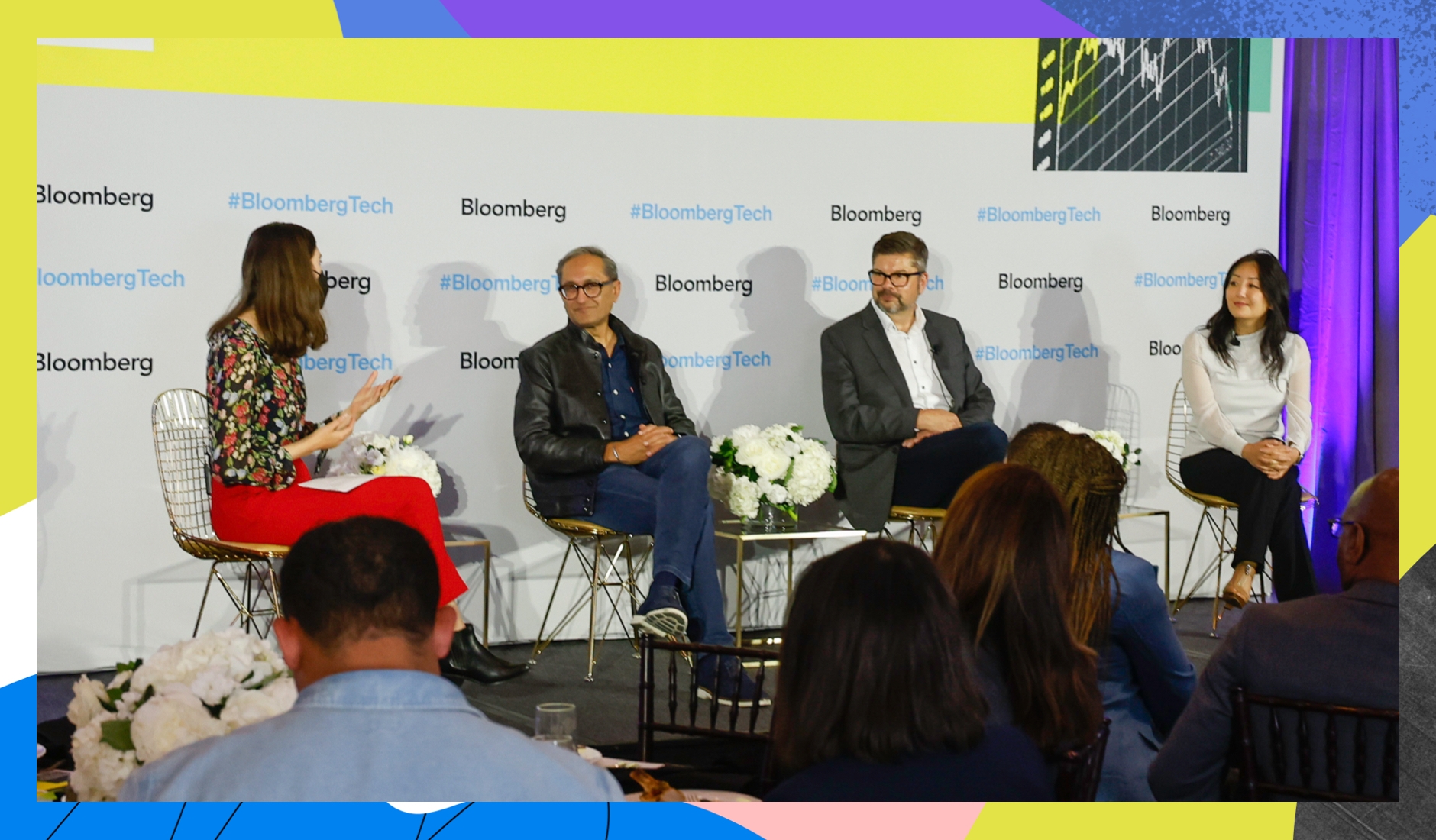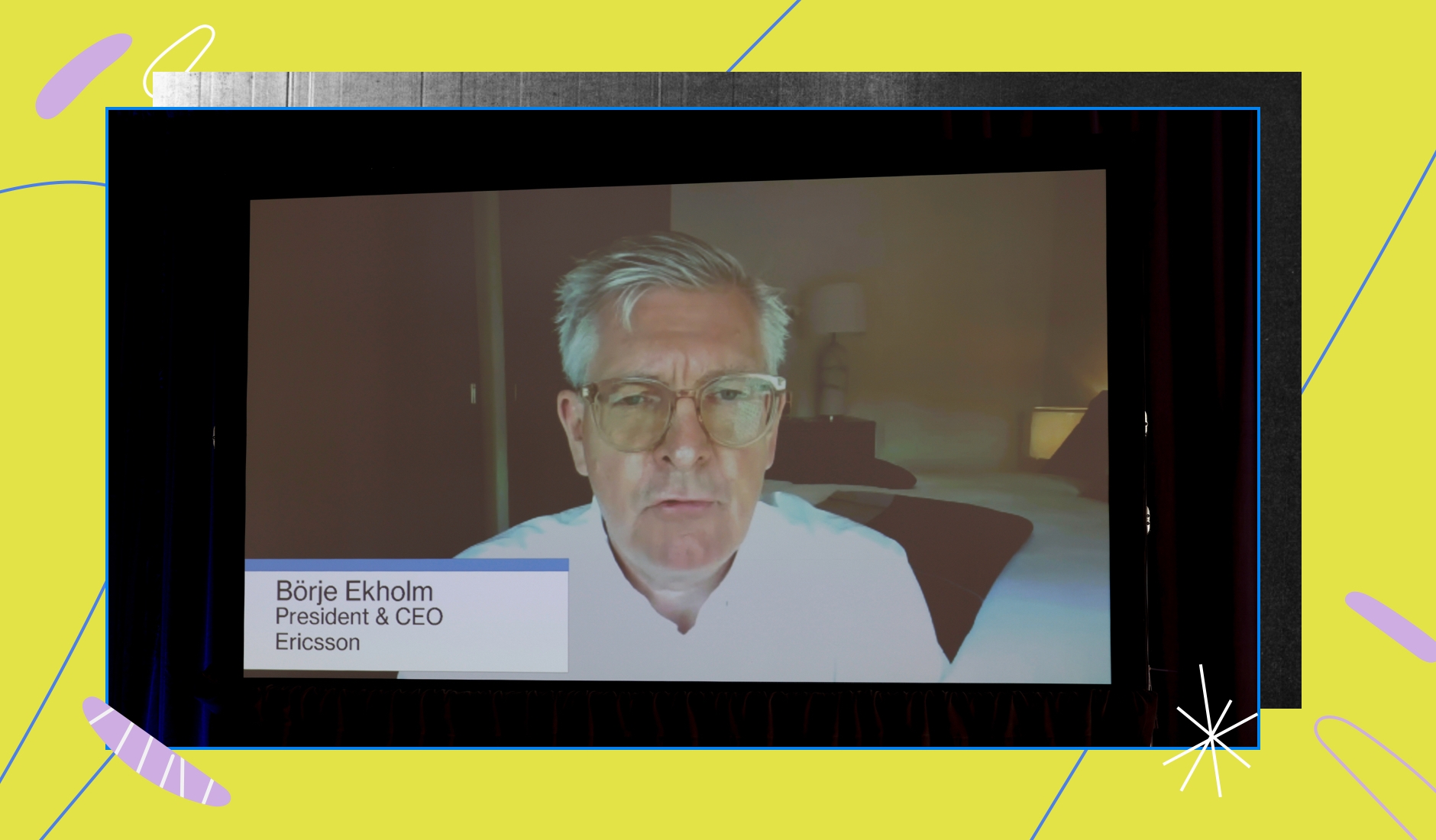With 5G and Tech, the Possibilities for the Future Are Endless
Business is being reshaped by an increasingly connected world.
The power and potential of mobile connectivity have been on display since large parts of the world went digital in one fell swoop during the global pandemic. Almost overnight, people were doing just about everything virtually, from work and education to entertainment and shopping.
The infinite possibilities of connectivity took center stage during the recent Bloomberg Technology Summit, where Ericsson, the Swedish multinational networking and telecommunications company, was a sponsor and hosted panel discussions, interviews and an executive spotlight. The invitation-only event was attended by some of the biggest names in tech and business, and topics included autonomous vehicles, the metaverse, smart clothing and smart ships—and how connectivity will enable it all.

At the summit’s Ericsson Sponsor Spotlight: The Possibilities of Unlimited Connectivity session, Börje Ekholm, President and CEO of Ericsson, said that better connectivity is changing the world around us, and that the pandemic raised awareness of its critical nature and future potential.

“During a crisis, typically, underlying trends are reinforced. In the case of Covid-19, it accelerated the trend of digitalization, and digital infrastructure allowed societies and businesses to operate almost as before, but in a very different way,” Ekholm told the audience of executives. “Most people around the world depend on mobile networks for connectivity. Mobile networks proved highly resilient. Without mobile networks, economies around the world would probably have ground to a halt.”

Connectivity is empowering businesses to “fundamentally change”
Connectivity dictates how we work, how quickly we can get things done and how well we can collaborate. Seamless connectivity creates efficiencies, boosts productivity and extends the reach of goods and services.
Mobile connectivity has become an imperative for business and society because people, systems and technologies increasingly depend on its speed, high reliability and ultra-low latency—the lag time between when a device requests information and receives it.
New cellular networks have been introduced about once a decade, but rollouts have accelerated in recent years. The first generation, 1G, launched in 1980, enabling the first cell phone calls. With 2G, messaging was introduced. 3G brought the internet into the palm of our hands. And 4G, rolled out in 2009, enabled movie and music streaming. The fifth-generation cellular network, 5G, delivers significantly enhanced performance including higher bandwidth, faster mobile speeds and increased reliability.
Ericsson, which has a portfolio of cellular connectivity products using 4G and 5G networks to supply secure, high-performance connectivity to businesses, says that 5G will do for industries and governments what 4G did for individuals. “4G digitalized consumers, and now, I know very few people who still have DVDs or CDs,” Ekholm says. “With 5G, we can now digitalize enterprises in the same way.”
Connectivity is both “a push from the top” and “a need from the bottom”
Emerging technologies like artificial intelligence, virtual reality, IoT, Internet of Senses, autonomous mobile robots and digital twins are increasing the need for connectivity as these technologies connect people and systems in new and interesting ways. Technology is streamlining operations, automating time-consuming processes and putting information at our fingertips faster than ever before.

At the summit’s Ericsson Think Tank Briefing: Redefining Business and Society with Limitless Connectivity session, Chevron Shipping Co. Chief Information Officer and Chief Digital Officer Janet Lee said that technology coupled with connectivity has enabled Chevron to take advantage of capabilities like real-time monitoring to improve operations while working toward sustainability goals.

“We’re now able to take data from various systems across our ships, from various pieces of equipment—things like diesel engines, power generators and propellers. Having access to that information guides the decisions we make around operational efficiency, cost efficiency and how we do inventory on our ships,” she said.“More importantly, it’s allowed us to view fuel consumption and understand how we manage our speed, as well as do things like anticipate congestion at ports and berths, and as we understand those various factors, it allows us to have a lower carbon footprint in addition to being able to operate more efficiently.”
In addition to the benefits of emerging technologies to company operations and the environment, everyone from employees to consumers expects the increased flexibility enabled by these technologies coupled with robust connectivity.
During the Ericsson Think Tank Briefing, Harmit Singh, Executive Vice President and Chief Financial Officer of Levi Strauss & Co., said that connectivity is now driving the 169-year-old business because every stakeholder of the company is demanding greater connectivity, digital solutions and greater flexibility. One new technology used by the company is a laser machine that employs algorithms to fade and distress its jeans, which reduces chemical use and cuts processing time from 20 minutes to 90 seconds.

“[Connectivity] is critical to our future,” Singh says. “It’s the way consumers shop today. It’s how our employees want to work. It’s also important to us. It’s important to drive sustainable practices. So, for us, it’s both a push from the top as well as a need from the bottom.”
Ericsson, which is both a producer and consumer of connectivity, says that companies will continue to see the value and benefits of investing in connectivity—something Ericsson itself can attest to. For instance, by using cellular networks, digital twins, IoT sensors and AI, Ekholm says output per employee more than doubled at the Ericsson USA 5G Smart Factory, in Lewisville, Texas.
“Wireless has become a primary source of connectivity, and that will turn some conventional wisdom on its head,” he says. “Wireless connectivity is going to empower businesses to fundamentally change.”
